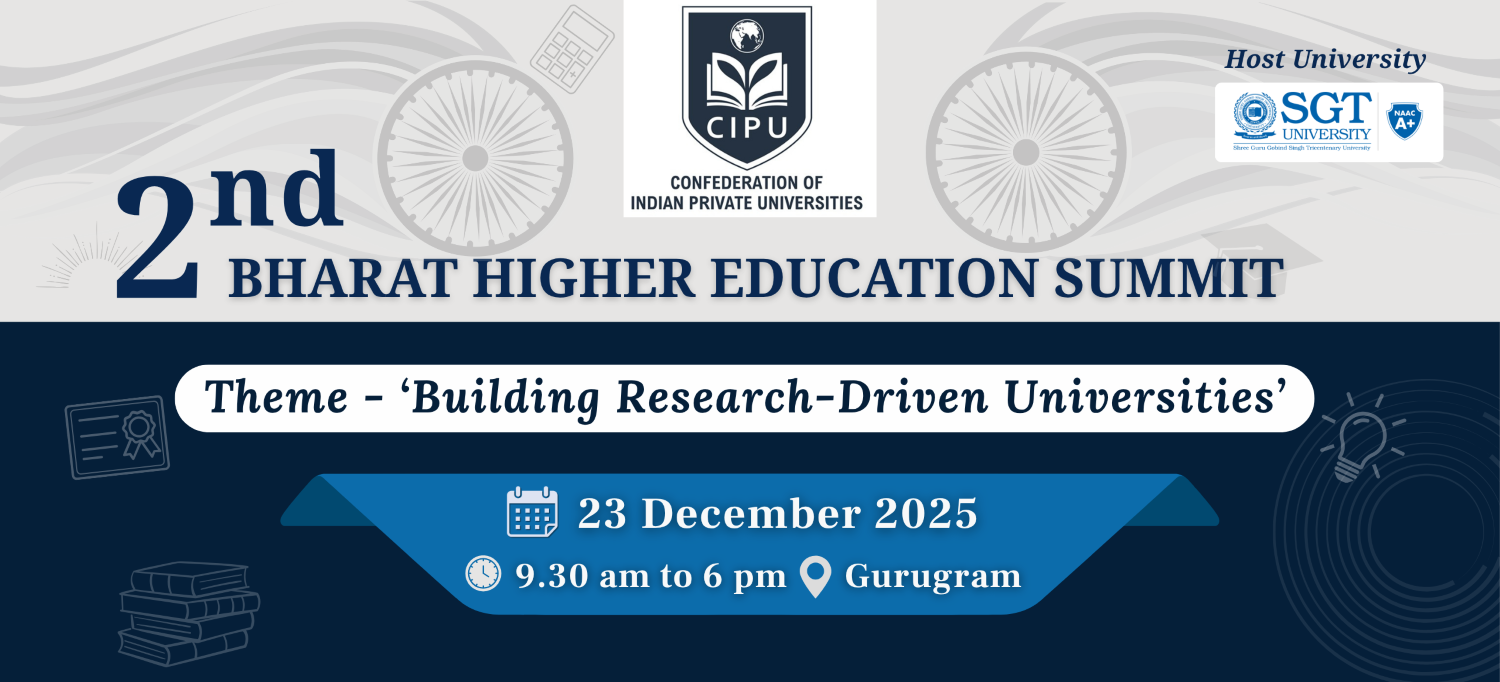
|
Prof. (Dr.) Sudhir Gavhane
Veteran Higher Educationist & Former VC -MGM University, Aurangabad ( Sambhajinagar) & YCMOU -Nashik, Former Director-Dean , Liberal Arts, Science and Commerce , MITWPU, Pune Email - professorsudhirg1955@gmail.com |
Abstract :
The period from 1995 to 2025 marks a profound and irreversible shift in the role of universities, transforming them from secluded centers of pure, fundamental inquiry into pivotal engines of economic growth and innovation. This paradigm change was catalyzed by seminal legislative actions, the maturation of national innovation policies, and the institutionalization of technology transfer. The institutional mechanisms for commercializing academic research, most notably the Technology Transfer Office (TTO), have become ubiquitous across the globe.
Globally, the rate of patent filings has seen a dramatic increase, more than tripling between 1995 and 2022. A significant portion of this growth is attributed to the accelerated patenting activities of universities and public research organizations. This trend is not monolithic; it is shaped by distinct national and regional models. The United States, leveraging the framework of the Bayh-Dole Act, has cultivated a decentralized, entrepreneurial model exemplified by the Stanford-Silicon Valley ecosystem. In contrast, Europe has championed a "gap-bridging" approach, with organizations like the Fraunhofer-Gesellschaft actively developing early-stage university research into marketable technologies. East Asian nations, particularly China, have pursued a state-driven, top-down strategy to achieve technological sovereignty.
However, this commercialization imperative is not without its complexities. It has introduced significant tensions with the traditional "open science" ethos of academia, raising concerns about academic freedom, conflicts of interest, and the diversion of public funds to legal battles. The analysis indicates that a healthy innovation ecosystem must carefully balance commercial incentives with the foundational values of transparency and intellectual freedom. To sustain a vibrant innovation landscape, future policy must focus on holistic measurement, insulated longterm funding, and a collaborative, multi-stakeholder approach that transcends traditional institutional boundaries.
Keywords : Innovations , Patents , Knowledge Creation, Technology Development, Intellectual Freedom, Technology Transfer Office , Open Science , Commercial Technology, Startups, Entrepreneurial education , Entrepreneurship Culture , University Quality , Research
Introduction: The Evolving Role of Universities in the Innovation Ecosystem
Since the mid-20th century, the university has been a cornerstone of scientific advancement, primarily operating under an "open science" model where the goal was to produce and disseminate knowledge freely as a public good. Access to this knowledge was to be free of additional costs, with institutions funded by governments in recognition of the societal benefits and positive externalities of their output. However, the three decades spanning 1995 to 2025 witnessed a fundamental and lasting transformation of this role. Economic pressures, coupled with a growing awareness of public research as a strategic national asset, prompted governments worldwide to devise policies that actively encouraged the commercialization of university discoveries. This era saw the institutionalization of technology transfer, with the ubiquitous rise of dedicated administrative units designed to facilitate the transition of research from the laboratory to the marketplace.
At the heart of this new paradigm is the Technology Transfer Office (TTO), a central institutional figure responsible for managing the complex and multi-step process of commercialization. This process typically involves a clear, sequential pathway from an initial scientific discovery to the creation of a viable commercial product or company. It begins when a university scientist makes an invention, leading to an invention disclosure submitted to the TTO. The TTO then assesses the invention, decides whether to pursue a patent application, and proactively markets the technology to potential partners. The final stages involve negotiating a licensing agreement and, ultimately, either licensing the technology to an existing company or establishing a new spin-off firm. This structured approach underscores the shift from a passive, discovery-oriented role to an active, market-engaged one. The central thesis of this report is that while this transformation has unlocked immense economic and societal value, it has also introduced significant complexities and ethical dilemmas, leading to a divergence in global strategies and outcomes.
Part I: Foundational Principles and Measurement Frameworks
The Technology Transfer Pipeline
The process of technology transfer has become increasingly formalized, following a pipeline model that begins with research and ends with commercial application. This model is built on an eight-step approach that standardizes the journey of an invention. The early stages of this pipeline are considered bellwethers for future success. A robust and efficient system for researcher participation and the processing of new cases as measured by metrics like the number of invention disclosures received is a strong indicator of what is possible in later stages, such as the number of signed licensing agreements. This structured approach is a direct result of institutional efforts to professionalize and standardize the commercialization process.
Metrics and Their Limitations
The primary method for gauging the performance of university innovation and technology transfer has been through a narrow set of IP-mediated metrics. The six most commonly collected metrics are the number of invention disclosures, patent applications, patent grants, licenses, and startups established, along with the total amount of licensing income. While these metrics provide a valuable, if partial, view of performance, they suffer from significant limitations that can distort the true picture of a university's innovative output.
The principal criticism of these IP-centric metrics is their failure to capture the full scope of a university's impact. By focusing exclusively on IP-mediated knowledge transfer, other equally vital, but less quantifiable, forms of contribution are viewed as "unimportant and of low value". These non-IP-mediated activities include informal knowledge sharing through personal contacts, training of students and researchers, collaborative research contracts, and the use of specialized university facilities. For example, the contribution of a highly skilled PhD graduate who joins a company and drives internal innovation is a significant societal benefit but is not captured by standard IP metrics. This narrow measurement framework creates a structural bias in institutional policy, as universities and individual researchers are incentivized to prioritize activities that are explicitly measured and rewarded, potentially at the expense of other forms of knowledge transfer.
Furthermore, these metrics can be misleading when used for comparative analysis. An institution's performance can be disproportionately skewed by a single "blockbuster" license, making it difficult to perform a meaningful "apples-to-apples" comparison over time or with peer institutions. To ensure a more accurate assessment, it is often necessary to normalize data by controlling for external factors such as the amount of R&D revenue and internal factors like the number of staff in the TTO. A full evaluation of a university's role requires a more comprehensive and holistic measurement framework that extends beyond patents and income to capture the broader societal and economic impact.
| Metric | Measurement Type | Value Captured | Limitations & Nuances |
|---|---|---|---|
| Invention Disclosures | Quantity (Nominal) | Indicates researcher participation and the health of the early-stage pipeline. | A high number does not guarantee a high number of patents or licenses; may indicate a low bar for submission. |
| Patent Applications | Quantity (Nominal) | A measure of formal IP protection efforts and the scale of inventive output. | Application does not guarantee a grant; many applications never lead to commercialization. |
| Patent Grants | Quantity (Nominal) | Indicates successful IP protection and the novelty of an invention. | A granted patent can be a "dead" asset if it is not licensed; does not reflect commercial success. |
| Licenses & Options | Quantity (Nominal) | The number of agreements signed, a key milestone in the commercialization process. | Does not indicate the value or success of the license; a "blockbuster" license can skew total numbers. |
| Startups Established | Quantity (Nominal) | A measure of direct entrepreneurial output from the university. | Survival rates and long-term economic impact are not reflected in this metric; a firm may not be a true "startup" in the fast-growth sense. |
| Licensing Income | Financial (Interval) | A direct measure of financial return from commercialization activities. | Highly skewed by a few large deals; does not capture the full economic or social value created by the technology. |
| Consulting, Training, & Informal Contacts | Non-IP (Qualitative/ Nominal) | Measures non-IP-mediated knowledge transfer, which is often crucial for industry innovation. | Difficult to quantify and often devalued by institutional metrics. |
| Research Expenditures | Financial (Interval) | Indicates the scale of an institution's R&D efforts. | Not a direct measure of commercial success, but a key factor that influences the number of invention disclosures and, subsequently, licenses. |
| Follow-on R&D Revenue | Financial (Interval) | A measure of continued collaboration and trust with industry partners. | Often more valuable than licensing income but not always tracked as a primary metric. |
Part II: The Historical and Policy Drivers (1995-2025)
The Bayh-Dole Revolution
The foundation for the institutionalization of university technology transfer in the United States, and subsequently globally, was laid well before 1995 with the passage of the Bayh-Dole Act in 1980. Prior to this landmark legislation, discoveries based on federally funded research were retained by the government, with fewer than 5% of these inventions being licensed for commercial use. The Act fundamentally changed this by empowering universities, nonprofits, and small businesses to retain ownership of the intellectual property (IP) resulting from federal research funding. This single legislative change provided a powerful incentive for universities and their researchers to actively commercialize discoveries, leading to a significant and lasting impact on the U.S. economy, including the creation of over 11,000 new startup companies since its enactment.
The Act's impact was not merely economic; it catalyzed a profound cultural and legal transformation. Historically, the relationship between academia and the patent system was characterized by a mutual exclusion rooted in the concept of "academic exceptionalism" the notion that the fruits of academic science should be treated differently from other inventions. Bayh-Dole fundamentally changed this by making the commercialization of academic research a core function of the university. As a result, academic science has become fully integrated into the traditional commercial narrative of patent protection. This is evidenced by the fact that courts now frequently cite a university's "commercial nature" to reject the idea of special, exceptional treatment for academic entities in patent doctrine. This shift institutionalized the university's role as an active participant in the market economy, bridging the gap between innovative research and its practical applications
Global Policy Diffusion and Convergence
The success of the U.S. model, particularly during the economic boom of the 1990s, spurred a global wave of similar policy reforms. Nations worldwide sought to emulate the U.S. experience by designing their own national innovation systems. Governments established targeted funding programs, grants, and legal frameworks to facilitate technology transfer and encourage collaborations between universities and industry. Over this period, there was a shift in government funding channels from general structural support to more competitive, problemoriented, or industry-focused programs.
In the United States, this trend was further reinforced by political advocacy from organizations like the Association of American Universities (AAU). The AAU has consistently pushed for sustained federal investment in science and research, viewing it as essential for national security, economic prosperity, and leadership in emerging fields such as quantum computing and artificial intelligence (AI). This advocacy, which led to bipartisan legislation like the CHIPS and Science Act of 2022, demonstrates a national consensus that government-funded research is no longer a luxury but a critical component of a country's competitive advantage.
Part III: Global Comparative Analysis of University Innovation Models
While the goal of accelerating technology transfer has been widely adopted, different nations have implemented distinct models that reflect their unique economic structures and policy priorities.
The U.S. Entrepreneurial Model: Silicon Valley and the Bayh-Dole Legacy
The U.S. model is characterized by a decentralized, entrepreneurial approach, with the Stanford-Silicon Valley ecosystem serving as a premier case study. Stanford's central role in the emergence of Silicon Valley was not accidental; it was a result of deliberate institutional strategy. The university's leadership, particularly former engineering dean Frederick Terman, actively encouraged faculty and students to start their own companies, transforming the institution's mission to serve the American West and its burgeoning industries. Terman's vision led to the creation of the Stanford Research Park, where the university leased land to high-tech firms, effectively creating a physical hub for collaboration and innovation.
The success of this model is often attributed to the "garage" myth of lone entrepreneurs, but a closer analysis reveals a more complex, multi-stakeholder dynamic. The startups that emerged from Stanford were not created in a vacuum; their success was dependent on a "far-flung ecosystem" that existed before the first venture capital firm was even established. This infrastructure included sustained U.S. Department of Defense spending, which provided a market for nascent technologies like microwave systems and radar, as well as a network of local banks, venture capital, and a supportive legal framework. The university did not create this ecosystem out of thin air; rather, it strategically leveraged and formalized these pre-existing resources. This demonstrates that a university's innovative success is deeply intertwined with its surrounding environment and requires a coordinated approach involving government funding, industry partners, and a culture that values and supports entrepreneurial endeavors.
The European "Gap-Bridging" Model: The Fraunhofer-Gesellschaft
Germany and other European nations have adopted a different approach, epitomized by the Fraunhofer-Gesellschaft. This German research organization, with its 75 institutes, operates on a unique model designed to bridge the gap between basic, early-stage university research and its commercial implementation. The organization earns approximately two-thirds of its annual €3.6 billion research budget from contracts with industry and government projects, with the remaining third coming from federal grants for pre-competitive research.
Fraunhofer's core mission is to address the "valley of death" the knowledge and funding gap that exists between initial research and product development. By actively collaborating with universities and industry, Fraunhofer "de-risks" new ideas, developing them into functional technologies that can be validated and demonstrated on an industrial timetable. This model makes the technology more attractive to investors, such as venture capitalists, who are typically averse to the high technological risk of early-stage innovations. This institutionalized approach provides a formal, structured solution to a key market failure, contrasting with the more decentralized, TTO- and VC-led U.S. model. The Fraunhofer approach represents a different national strategy for ensuring that public research translates into real-world applications and economic benefit.
The East Asian State-Driven Models
In East Asia, the approach to university innovation has been largely state-driven and top-down. China's government, for example, has historically implemented a series of policies to actively promote technology transfer from its universities. Beginning in the 1980s with the legalization of patenting and the launch of national research programs like the 863 Program, the government dramatically increased research funding to universities and encouraged them to participate in national development and enterprise growth. This policy timeline culminated in the National Patent Development Strategy, which declared a goal for China to become a global leader in patent creation, utilization, and protection by 2020.
This state-driven model, however, has also led to practices that are seen as a form of "forced technology transfer" in the context of the U.S.-China trade war. China's national interest-based policies incentivize foreign firms to enter the Chinese market but then strategically favor domestic companies once they have acquired "good enough" technology, often leading to the eventual push-out of foreign players. This reveals a critical difference in national philosophy: while Western nations view technology transfer as a means to create market value, the Chinese state uses it as a strategic mechanism to achieve technological and economic sovereignty. Japan, also inspired by the U.S. experience, initiated specific policies in the mid-1990s to encourage university-industry collaboration. However, the effect of these policies has been moderated by unique structural conditions. Japan's R&D landscape is dominated by large corporations that prioritize in-house research and have not traditionally absorbed a significant volume of new technology from university spin-offs. This, combined with labor market rigidity, a scarcity of venture capital, and sometimes rigid university IP policies, has resulted in weaker links between patents and commercial activity.
| Feature | U.S. Entrepreneurial Model | German/European "Gap-Bridging" Model | Chinese State-Driven Model | Japanese Hybrid Model |
| Primary Policy Instrument | Bayh-Dole Act of 1980 | Fraunhofer Model | Central government policies (e.g., 863 Program) | Five Science and Technology Basic Plans |
| Primary Funding Source | Federal R&D grants | 2/3 from industry contracts, 1/3 from government grants | State funding and national research programs | Top-down government support |
| University-Industry Dynamic | Decentralized, bottom-up. University-led with TTOs facilitating links to industry, including venture capital. | Fraunhofer acts as a central intermediary, bridging the research-to-product gap. | State-controlled and strategic; incentivizes foreign tech transfer and subsequent domestic substitution. | Dominated by informal ties and large companies' in-house R&D. |
| Key Outcomes | A surge in patent filings, establishment of TTOs, and creation of new startups and industries. | Effective bridging of the "valley of death," leading to notable innovations like the MP3 format and advanced solar cells. | Rapid increase in patenting and technological capabilities, but raises concerns of "forced technology transfer". | Weaker links between patents and commercial activity; academics respond to new policies to demonstrate productivity. |
Part IV: Addressing the Complexities and Criticisms
The Tension between Open Science and Commercialization
The commercialization of university research, while economically beneficial, has introduced a number of complex challenges and ethical considerations that must be carefully managed to maintain the integrity of academic institutions.
The traditional ethos of open science where knowledge is a public good freely shared can appear to be in direct conflict with the proprietary nature of patents and licensing. Critics argue that the institutional focus on revenue generation from patents can compromise a university's core mission. Concerns exist that financial incentives from commercial sponsors may cause researchers to compromise their academic values, potentially leading to a narrowing of research focus toward commercially viable projects rather than fundamental inquiry.
However, this tension is not a simple zero-sum game. A strong, quantitatively backed counterargument exists that shows the importance of intellectual freedom in fostering innovation. One study found that improving academic freedom by one standard deviation is associated with a 41% increase in patent applications and a 29% increase in forward citations, a measure of patent quality. This suggests that academic freedom is not an impediment to innovation but a prerequisite for it. The conclusion that can be drawn from this is that a healthy innovation ecosystem is one that protects the academic core the right to investigate, teach, and publish without undue external interference while simultaneously encouraging the transfer of knowledge for public benefit.
The Hidden Costs and Ethical Dilemmas
Beyond the philosophical tension, there are tangible costs and ethical dilemmas associated with the commercialization of academic research. One notable concern is the potential for universities to engage in "rent-seeking" behavior. Evidence suggests that institutions with greater research expenditures are more likely to pursue patent infringement claims, a phenomenon that critics argue diverts public and grant funds from productive research and innovation to costly legal battles. As non-practicing entities, universities cannot manufacture products; their primary means of generating income from patents is through licensing or litigation.
The fact that legal expenses are being internalized suggests that some universities are using patents as a "sword" to extract value rather than as a "shield" to protect their inventions. A further, and equally important, ethical challenge is the management of conflicts of interest (COI). Conflicts arise naturally when an inventor, who is also a university employee, stands to benefit financially from the commercial success of a licensed technology, whether as a company founder, stockholder, or consultant. These situations create a potential for a lack of transparency and an appearance of preferential treatment in sponsored research. Leading institutions have developed robust mitigation strategies, emphasizing disclosure, oversight, and a clear separation of roles. For example, MIT’s Technology Licensing Office (TLO) handles all licensing negotiations directly with a non-MIT representative of the company to avoid potential conflicts. These practices are essential to preserving the integrity of academic research and maintaining public trust.
Conclusion: Future Trajectories and Strategic Recommendations
The period from 1995 to 2025 has cemented the university's role as an active participant in the global innovation ecosystem. This transformation, driven by policies like the Bayh-Dole Act, has led to a remarkable tripling of global patent activity and the rise of distinct national innovation models. While this evolution has unlocked immense economic and societal value, it has also created a set of enduring challenges that must be addressed to ensure a sustainable and ethical future for academic innovation.
The central challenge moving forward is to build a robust ecosystem that leverages the university's unique role as a source of foundational knowledge without compromising its core mission and values. The analysis presented here suggests several strategic recommendations for the key stakeholders in the innovation ecosystem:
For Policymakers: Policymakers should move beyond a narrow focus on IP-mediated metrics and adopt a more holistic measurement framework that captures the full societal and economic impact of universities, including non-IP-mediated knowledge transfer. It is also critical to implement long-term, politically-insulated funding mechanisms that support a portfolio of innovation, including both upstream basic research and downstream commercialization. This approach will help bridge the "valley of death" and ensure a continuous pipeline of ideas.
For University Administrators: University leaders must prioritize the ethical management of potential conflicts of interest by strengthening internal policies on disclosure and separation of duties. They should also foster a supportive internal culture that values diverse forms of knowledge transfer and protects the principle of academic freedom, which is a key driver of both the quantity and quality of innovation. Furthermore, administrators should invest in strengthening institutional support to help researchers navigate the commercialization process, learning from effective models like the Fraunhofer-Gesellschaft and Stanford's SPARK program.
For Industry Leaders: Industry must recognize that the full value of a university partnership extends beyond patent licensing. Companies should invest in sustained, pre-competitive research and development in collaboration with academic institutions to build a shared IP commons. This will not only lead to new discoveries but also provide access to a highly skilled workforce, a crucial but often undervalued component of the technology transfer process. By engaging with universities on a broader basis, industry can help to build a resilient and collaborative innovation ecosystem for the long term.





